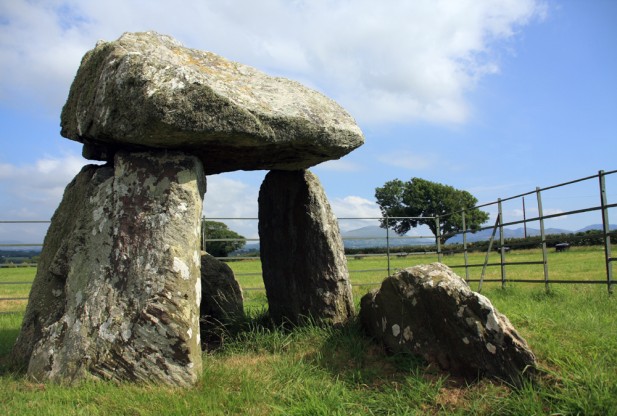
© Gail Johnson/ShutterstockNeolithic Ancient Monuments of Angelsey North Wales.
New analytical techniques are changing long-held, simplistic views about the
evolutionary history of humans in Europe. The study, reported in the journal
Trends in Genetics, found that many cultural, climatic, and demographic events have shaped genetic variation among modern-day European populations and that the variety of those mechanisms is more diverse than previously thought.
Recent advances in paleogenetics, or the study of the past through the examination of preserved genetic material from ancient organisms, are providing never-before-seen glimpses into the complex evolution of humans in Europe. These new technologies are helping researchers recreate events that led to the creation of what is now known as modern man.
Around 27,000 to 16,000 years ago, following the period when ice sheets were at their maximum extension across the Earth,
hunter-gatherer populations re-colonized most parts of Europe. The first farming populations appeared on the continent around 8,000 years ago during the so-called Neolithic transition.
The
Neolithic transition, sometimes called the
Agricultural Revolution, was the world's first historically verifiable revolution in agriculture. The wide-scale transition from a hunter-gatherer lifestyle to permanent agricultural settlements helped to support an increasingly large population. Plant and animal domestication evolved independently in six separate locations worldwide between 8,000 - 5,000 B.C.
During this time, two separate modes of life coexisted in Europe. The hunter-gatherers continued to rely on wild food resources, while farming communities had an entirely different demographic profile and lifestyle of domesticated crops and livestock, pottery, housing and new storage technologies.
It has long been assumed that the genetic diversity of contemporary Europeans was formed during the Neolithic transition. It now appears that changes were affected both before and after this key event in evolution. The spread of farming is likely to have varied to a great extent by region, which changes the impact of migrating farmers' and local hunter-gatherers' genetic contributions to the future.
"We are currently at a stage in which next-generation sequencing technologies, ancient DNA analyses, and computer simulation modeling allow us to obtain a much more accurate and detailed perspective on the nature and timing of major prehistoric processes such as the colonization of Europe by modern humans, the survival of human populations during the ice age, the Neolithic transition, and the rise and fall of complex societies and empires," said Dr.
Ron Pinhasi, of Trinity College Dublin, in Ireland.
"The development of inter-disciplinary approaches is crucial to elaborate realistic models of human evolution," explains Dr. Mathias Currat. "These methods and technologies hold great potential to shed new light on past genetic variation, the onset of major cultural and technological changes that left their imprint on past and present genomes, and potentially on the impact of changes in lifestyle and demography on the appearance of certain diseases and genetic disorders," says Dr. Pinhasi.

Reader Comments
to our Newsletter